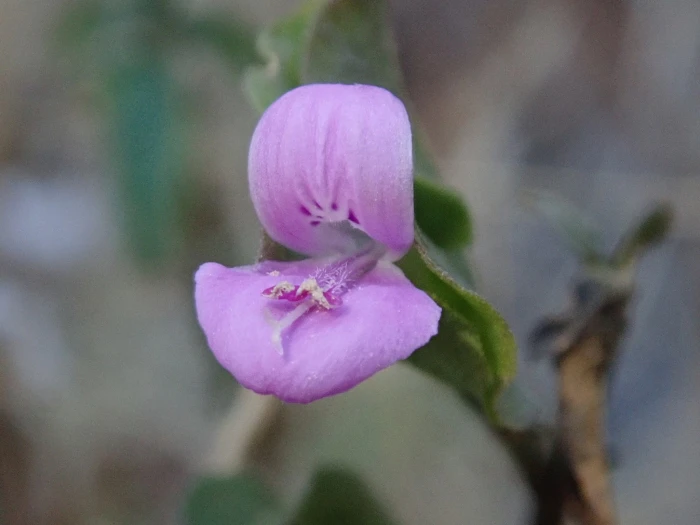Arizona Foldwing
(Dicliptera resupinata)
Arizona Foldwing (Dicliptera resupinata)
/
/

Nolan Exe
CC BY 4.0
Image By:
Nolan Exe
Recorded By:
Copyright:
CC BY 4.0
Copyright Notice:
Photo by: Nolan Exe | License Type: CC BY 4.0 | License URL: http://creativecommons.org/licenses/by/4.0/ | Rights Holder: Nolan Exe | Publisher: iNaturalist | Date Created: 2021-04-22T00:34:44-07:00 |



















Estimated Native Range
Climate Requirements for Brockton, Massachusetts
| This Plant | Your Site | Plant Suitability for Your Location | ||
|---|---|---|---|---|
| • Precipitation | 15" - 18" | 47" | Aquatic | Aquatic |
| • High Temp. | 90°F - 101°F | 84°F | Your summer temperatures are normal for this plant. | Excellent |
| • Low Temp. | 36°F - 57°F | 18°F | Your winter temperatures may be too cold for this plant | Too cold |
This plant may not grow well at your location - your precipitation is too high.
Summary
Dicliptera resupinata, commonly known as Arizona foldwing, is a perennial herb native to the semi-arid regions, rocky slopes, and open woodlands of the Southwestern United States and Northern Mexico. It typically grows up to 2 feet (61 cm) tall and is characterized by its unique inflorescence, which consists of pinkish-violet flowers surrounded by pairs of large, heart-shaped, green bracts, usually occurring in groups of three. The flowering season extends from spring through summer and into early fall, with the flowers being moderately showy and attracting pollinators such as hummingbirds.
Arizona foldwing is valued for its drought tolerance and its ability to thrive in a variety of soil conditions, making it a suitable choice for xeriscaping and as an ornamental plant in rock gardens or naturalized areas. It is also used for border planting due to its distinctive bracts and flowers. In cultivation, it prefers full sun to part shade and can adapt to soils with varying drainage capabilities, from fast to slow. While it is relatively low-maintenance, it can be susceptible to root rot if overwatered or planted in poorly drained soils. It is not known to have aggressive roots or to be particularly prone to diseases.CC BY-SA 4.0
Arizona foldwing is valued for its drought tolerance and its ability to thrive in a variety of soil conditions, making it a suitable choice for xeriscaping and as an ornamental plant in rock gardens or naturalized areas. It is also used for border planting due to its distinctive bracts and flowers. In cultivation, it prefers full sun to part shade and can adapt to soils with varying drainage capabilities, from fast to slow. While it is relatively low-maintenance, it can be susceptible to root rot if overwatered or planted in poorly drained soils. It is not known to have aggressive roots or to be particularly prone to diseases.CC BY-SA 4.0
Plant Description
- Plant Type: Herb
- Height: 1-2 feet
- Width: 2-3 feet
- Growth Rate: Moderate
- Flower Color: Purple
- Flowering Season: Spring, Summer, Fall
- Leaf Retention: Evergreen
Growth Requirements
- Sun: Full Sun, Part Shade
- Water: Medium
- Drainage: Fast, Medium, Slow
Common Uses
Bee Garden, Bird Garden, Butterfly Garden, Hummingbird Garden, Low Maintenance
Natural Habitat
Semi-arid regions, rocky slopes, and open woodlands
Other Names
Common Names:
Scientific Names: Dicliptera resupinata, Dicliptera resupinata var. orbicularis, Dicliptera formosa, Dicliptera torreyi, Dicliptera pseudoverticillaris, Dianthera sexangularis, Diapedium resupinatum, Adhatoda lithospermifolia, Dianthera malabarica
GBIF Accepted Name: Dicliptera resupinata (Vahl) Juss.